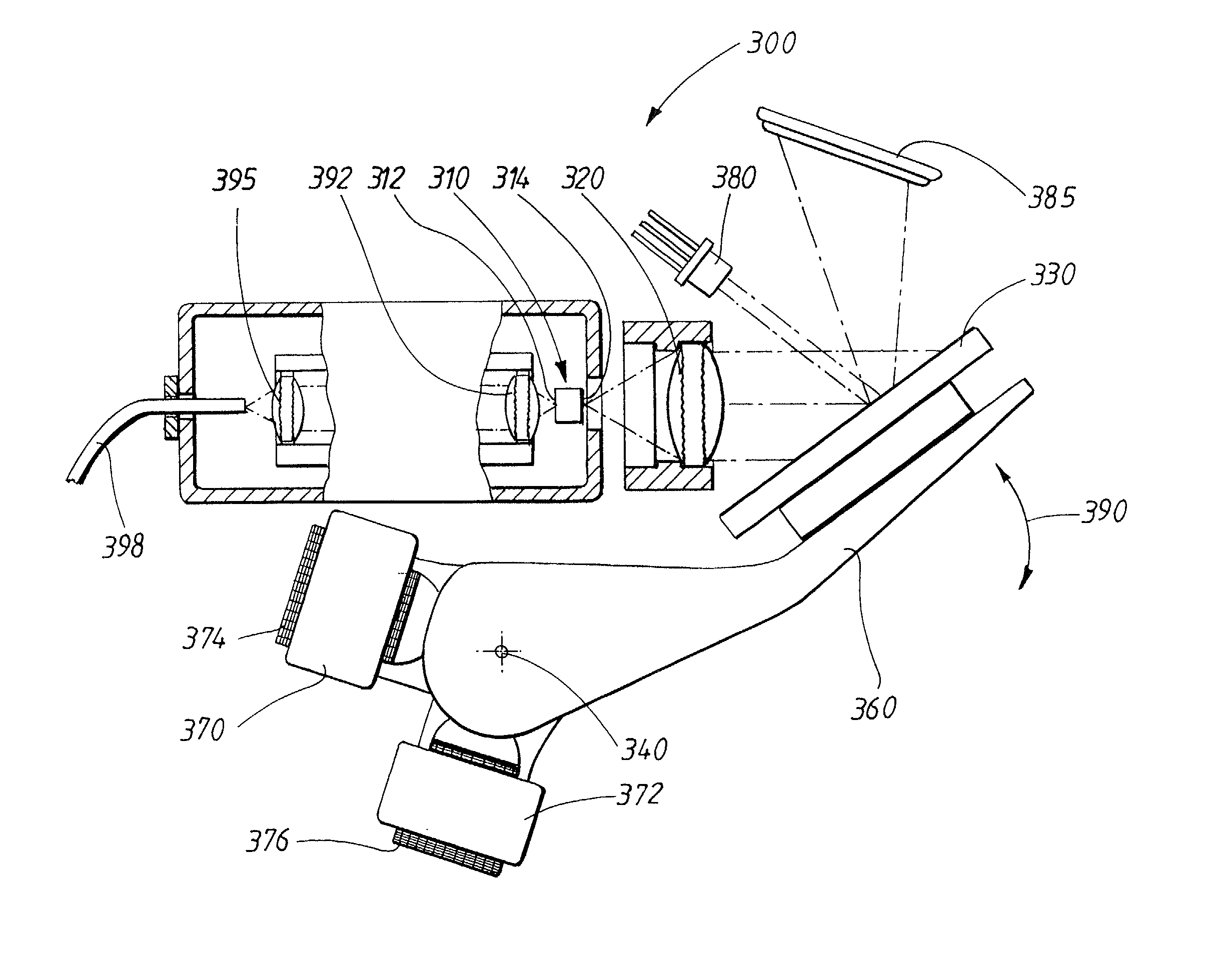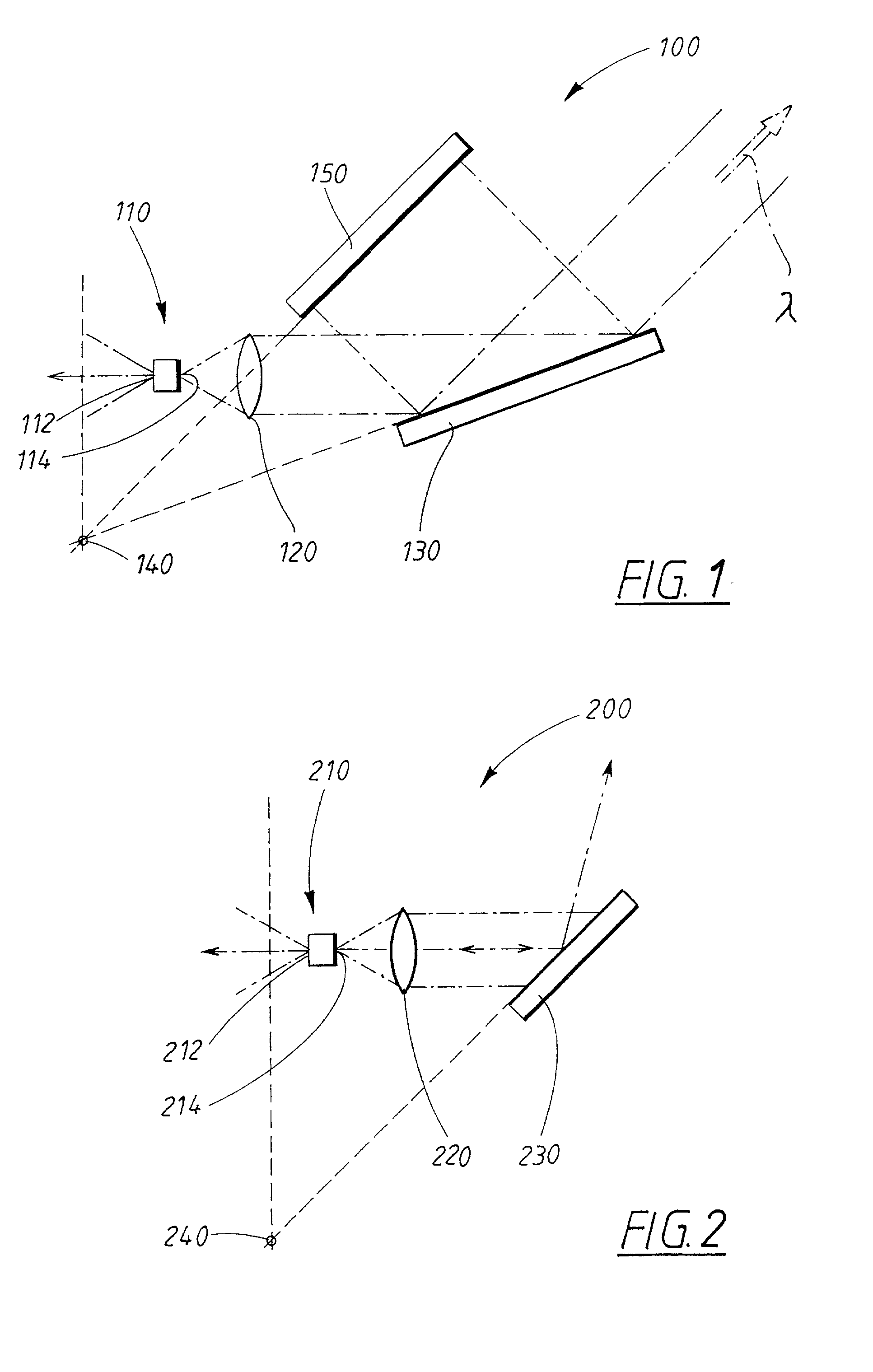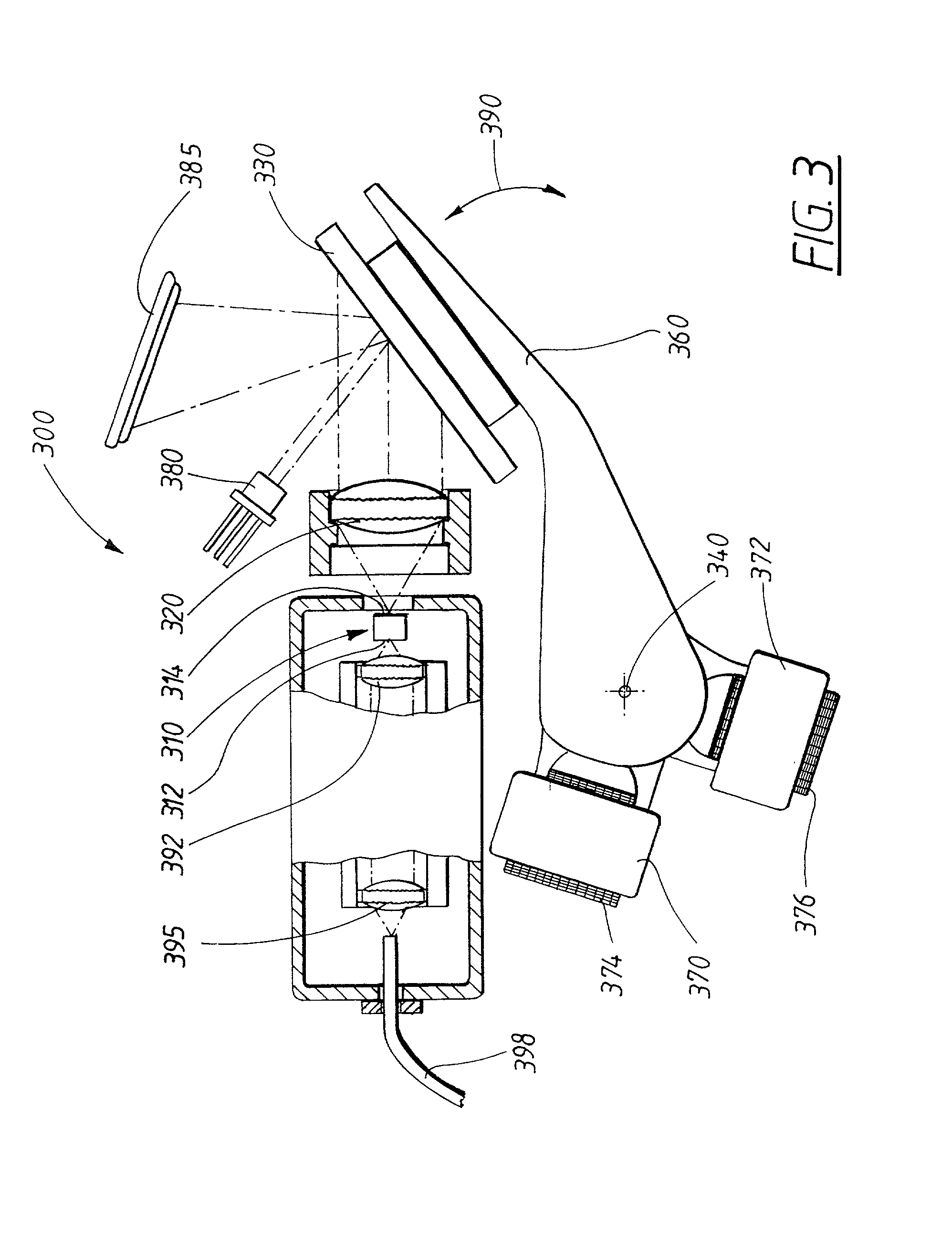Device and method for tuning the wavelength of the light in an external cavity laser
- Summary
- Abstract
- Description
- Claims
- Application Information
AI Technical Summary
Benefits of technology
Problems solved by technology
Method used
Image
Examples
Embodiment Construction
[0022] FIG. 1 shows a basic diagram of an external cavity laser (100) in which the invention can be applied. The external cavity laser (100) is constructed according to what is known as the Littman configuration, which will be explained below.
[0023] The external cavity laser (100) comprises an optically amplifying semiconductor chip (110), a first reflecting surface (112), an AR coated semiconductor chip facet (114), a diffraction grating (130), a collimating lens arrangement (120) and an auxiliary mirror (150) arranged on a movable part. The light which is emitted through the AR coated semiconductor chip facet (114) of the optically amplifying semiconductor chip (110), will be incident on the diffraction grating (130), towards which the light is collimated by means of a lens arrangement (120). From the diffraction grating (130), the light will be completely or partly diffracted towards the auxiliary mirror (150) and completely or partly reflected back towards the optically amplifyi...
PUM
 Login to View More
Login to View More Abstract
Description
Claims
Application Information
 Login to View More
Login to View More - R&D
- Intellectual Property
- Life Sciences
- Materials
- Tech Scout
- Unparalleled Data Quality
- Higher Quality Content
- 60% Fewer Hallucinations
Browse by: Latest US Patents, China's latest patents, Technical Efficacy Thesaurus, Application Domain, Technology Topic, Popular Technical Reports.
© 2025 PatSnap. All rights reserved.Legal|Privacy policy|Modern Slavery Act Transparency Statement|Sitemap|About US| Contact US: help@patsnap.com



